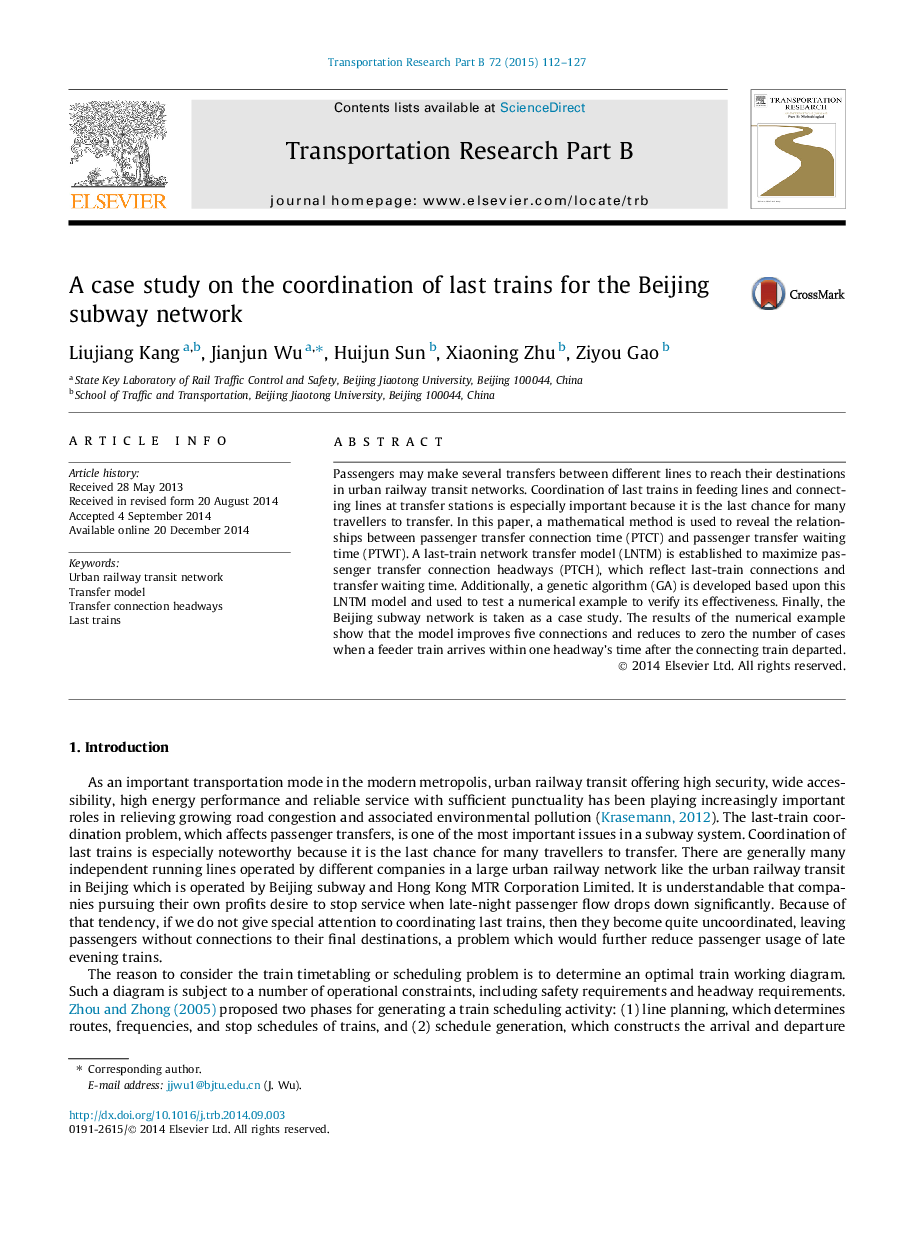| Article ID | Journal | Published Year | Pages | File Type |
|---|---|---|---|---|
| 1132033 | Transportation Research Part B: Methodological | 2015 | 16 Pages |
•A mathematical method is used to reveal the relationships between PTCT and PTWT.•A network transfer model is proposed to optimize the last-train coordination problem.•The departure time of last trains for Beijing subway network is investigated to improve the coordination.
Passengers may make several transfers between different lines to reach their destinations in urban railway transit networks. Coordination of last trains in feeding lines and connecting lines at transfer stations is especially important because it is the last chance for many travellers to transfer. In this paper, a mathematical method is used to reveal the relationships between passenger transfer connection time (PTCT) and passenger transfer waiting time (PTWT). A last-train network transfer model (LNTM) is established to maximize passenger transfer connection headways (PTCH), which reflect last-train connections and transfer waiting time. Additionally, a genetic algorithm (GA) is developed based upon this LNTM model and used to test a numerical example to verify its effectiveness. Finally, the Beijing subway network is taken as a case study. The results of the numerical example show that the model improves five connections and reduces to zero the number of cases when a feeder train arrives within one headway’s time after the connecting train departed.
